JOHANNES VERMEER
Delft, Netherlands, 1632 - 1675
Johannes Vermeer was a Dutch Baroque painter from Delft, Netherlands who lived from 1632 to 1675. Although he was not well-known during his lifetime, he is now considered one of the greatest figures of the Dutch 17th century, alongside Rembrandt. His paintings are known for their subtle use of light to create a sense of realism and immediacy. He lived during the Dutch Golden Age, a time of cultural and artistic flourishing. Vermeer's output was limited, as he primarily worked on commission for patrons, and only about 34 of his works survive today, compared to the hundreds produced by many of his contemporaries. Some of his paintings have also been lost or have deteriorated over time.
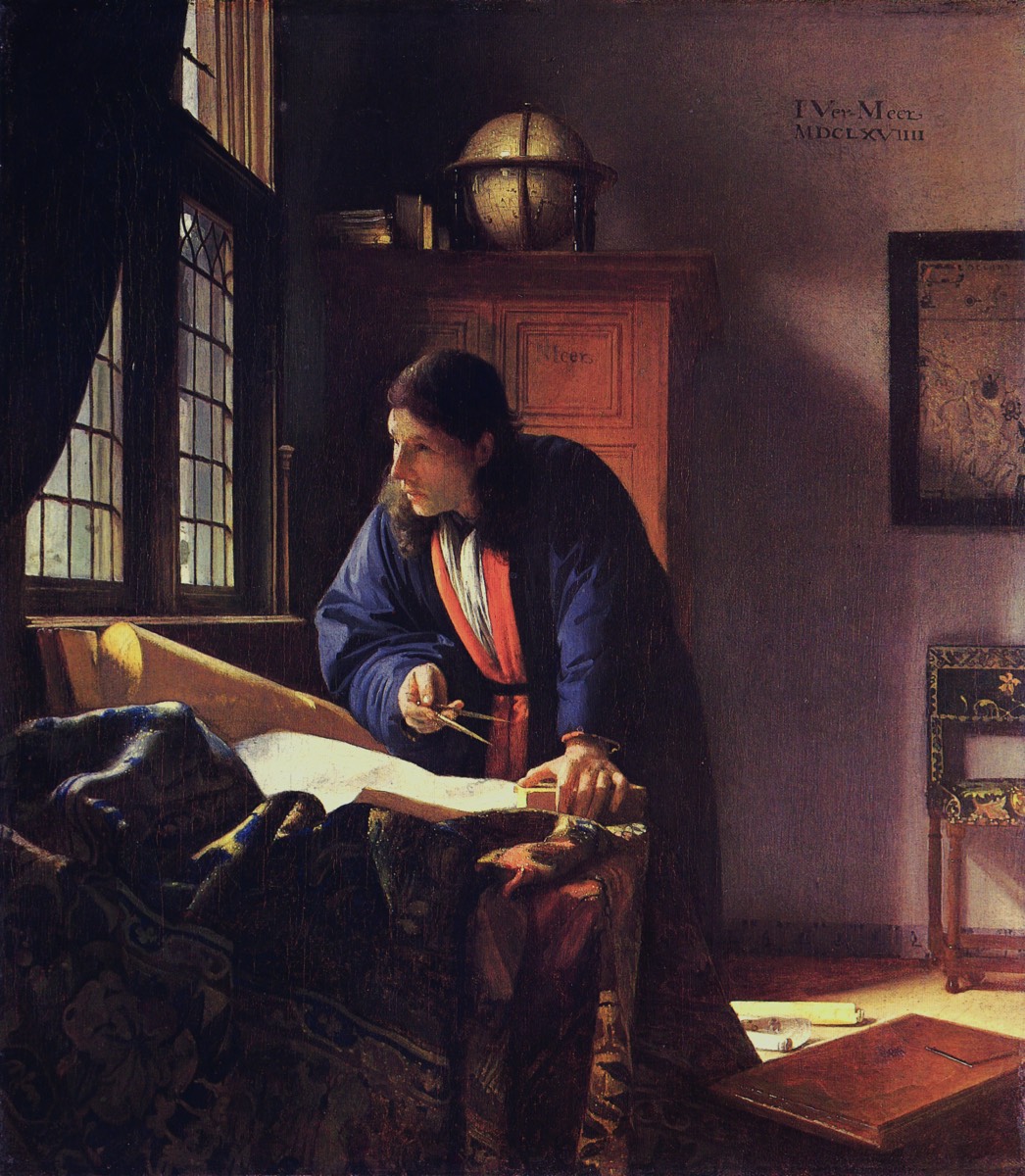
The Geographer
c. 1668–1669
Oil on canvas
53 x 46.6 cm. (20 7/8 x 18 1/4 in.)
Städelsches Kunstinstitut, Frankfurt am Main, Germany
Life
Johannes Vermeer's life is often described as unhappy and unsuccessful. He spent his entire life in Delft, where he was a member of the painters' guild and even served as its leader twice. However, it is believed that he never pursued painting as a full-time profession and instead ran the inn and art dealership that he inherited from his father. He married Catherina Bolnes, a Catholic woman, but his family did not approve of the union and many of their children died at an early age. Additionally, Vermeer's life was cut short.
Despite these difficulties, Vermeer was able to interact with important figures in public life thanks to his relationship with Catherina's wealthy family. In 1672, he was even called to The Hague to curate a collection of paintings for the Elector of Brandenburg. Despite this, Vermeer's financial struggles continued throughout his life. His production mostly consisted of domestic interiors, which were known for their use of light and portrayals of people engaging in everyday activities.
The year 1672 was a particularly difficult one for Vermeer as well as the entire Dutch Republic, as it was invaded by French, German, and British armies, which led to a significant economic downturn. This downturn in the art market made it even harder for Vermeer to make a living, and he fell deeper into debt. He borrowed large amounts of money and was even caught embezzling money from his mother-in-law.
Vermeer died on December 16, 1675, due to a fit of madness and depression. In the court records, his wife stated that the economic struggles of the war with France and the burden of supporting his family without means led him to a decline and ultimately death.
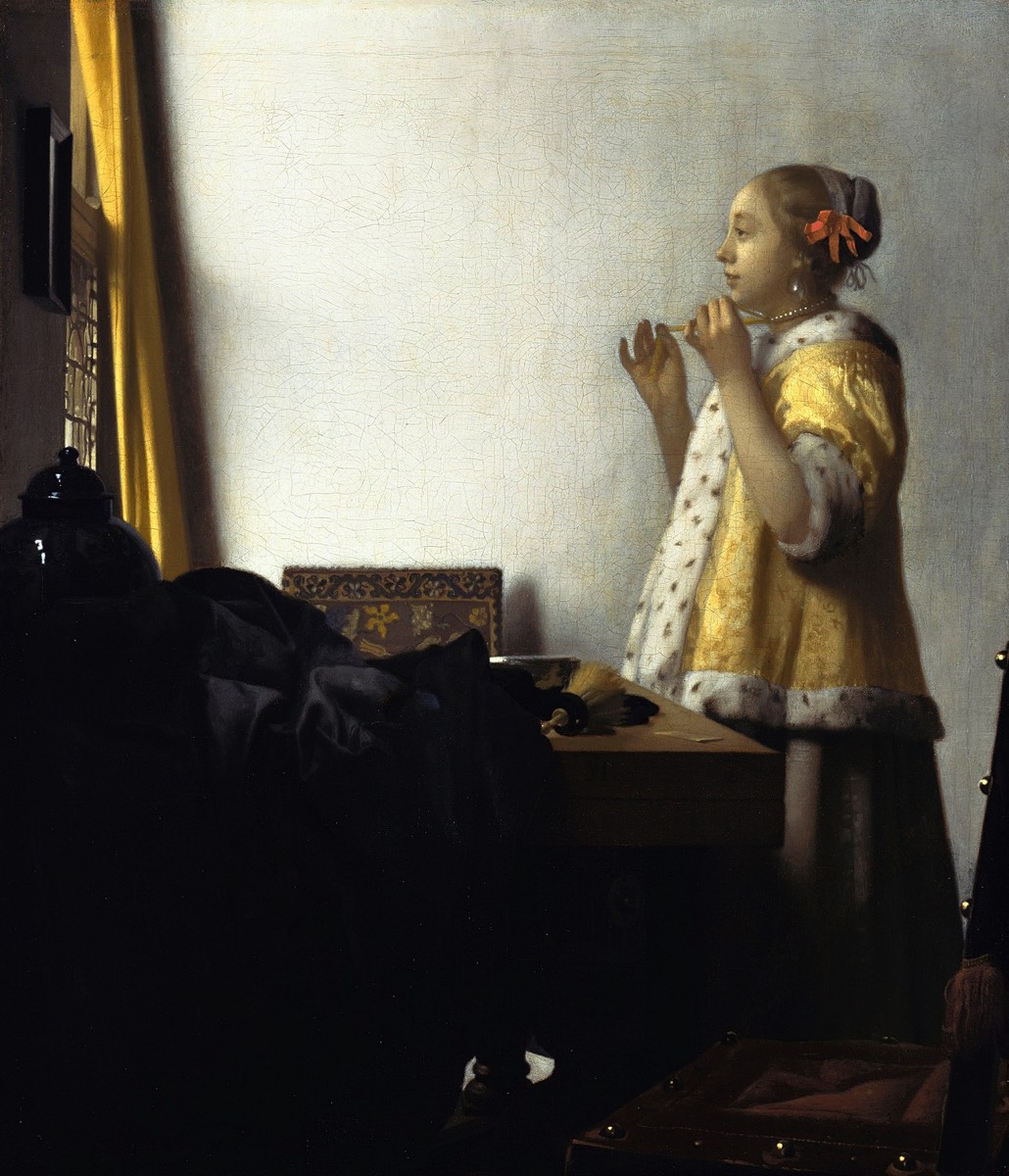
Woman with a Pearl Necklace
c. 1662–1665
Oil on canvas, 55 x 45 cm. (21 5/8 x 17 3/4 in.)
Staatliche Museen Preußischer Kulturbesitz, Gemäldegalerie, Berlin
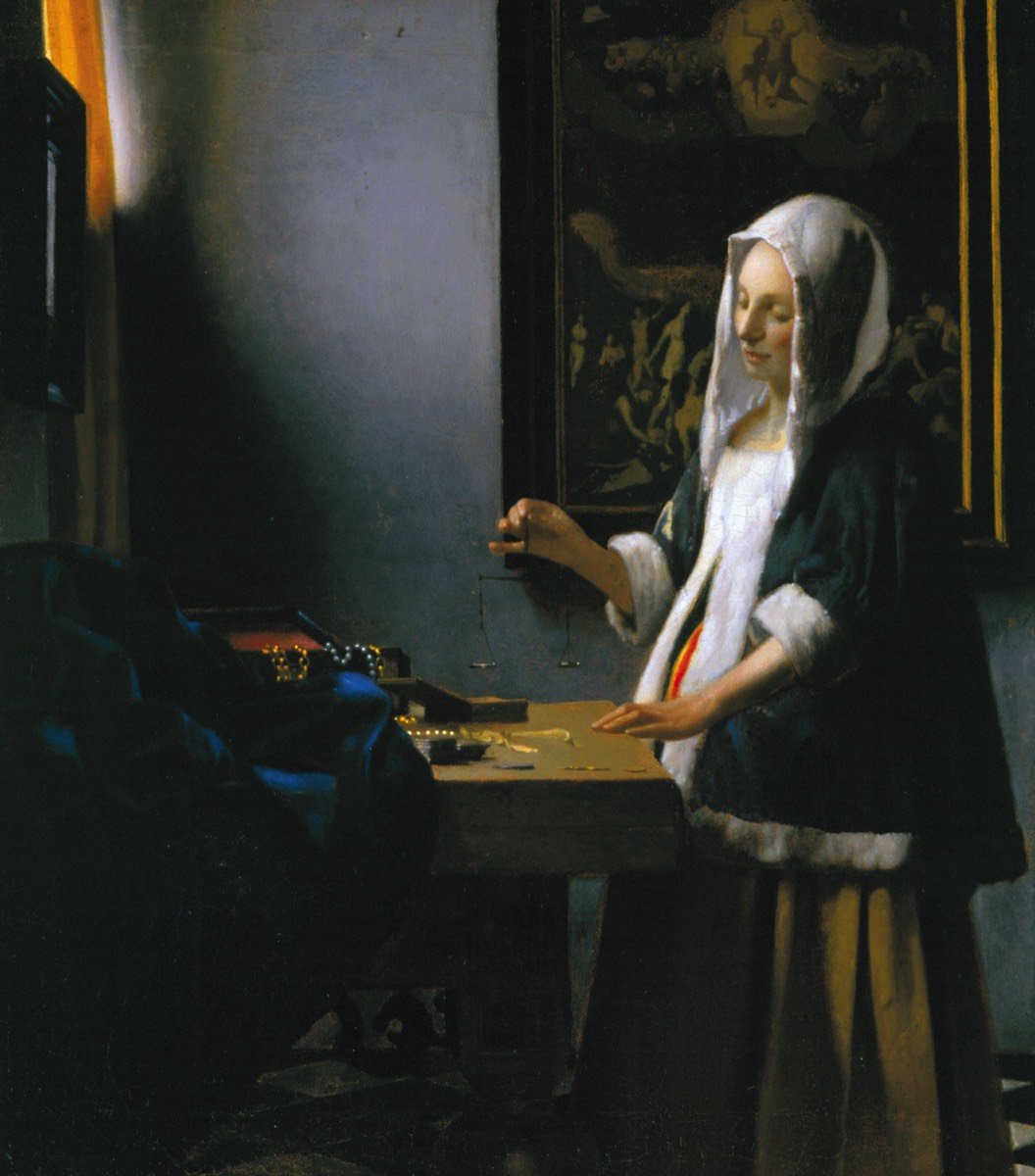
Woman Holding a Balance
c. 1662–1665
Oil on canvas, 42.5 x 38 cm. (16 3/4 x 15 in.)
National Gallery of Art, Washington D.C.
Works
Vermeer often started his paintings with a monochrome sketch, using it to establish the play of light as a central element in his composition. He would represent the shadows with larger areas of brown paint and leave the background light for the brighter areas. An unfinished painting by the Le Nain brothers shows a sketch done in this manner. Vermeer's sketch lines are usually delicate and are often hidden under the final painting. He would often blend the paint to smooth the edges between shapes, but sometimes he would leave a subtle gap. Due to the precision of perspective and reflections in his work, it is suggested that Vermeer may have used a camera obscura in his painting process. Layers of dark paint, including the sketch, played an important role in Vermeer's luminous paintings, and he varied the thickness of his final painting to take advantage of these background layers.
Vermeer's most famous painting is Girl with a Pearl Earring, which depicts an imaginary young woman in an exotic dress and large pearl earring. The painting is housed in the Mauritshuis Museum in The Hague. The painting represents the girl in a dark shallow space, with the attention of the viewer drawn exclusively to her. Unlike many of Vermeer's other subjects, she is not engaged in a daily chore and is aware of the viewer. Instead, she is captured in a fleeting moment, turning her head to meet the viewer's gaze with her eyes wide and lips parted as if about to speak. The painting is not meant to represent any specific person, but rather a study in facial expression and costume. The work showcases Vermeer's technical expertise and interest in representing light. The soft modeling of the subject's face reveals his mastery of using light to create form, and the reflections on her lips and earring show his concern for representing the effect of light on different surfaces.
Girl with a Pearl Earring became one of Vermeer's more famous pieces only in the late 20th century, with the 1995 exhibition at the National Gallery of Art in Washington, D.C., and the publication of the best-selling novel Girl with a Pearl Earring by Tracy Chevalier in 1999, which turned the painting's subject into a housemaid. This novel was adapted into an Oscar-nominated film in 2003.
As the Mauritshuis building underwent renovation in 2012, Girl with a Pearl Earring traveled to Japan, Italy, and the United States, where it drew large crowds. Upon its return to the Netherlands in 2014, the Mauritshuis announced that the painting would no longer be lent out, ensuring that the museum's main attraction would always be on display.
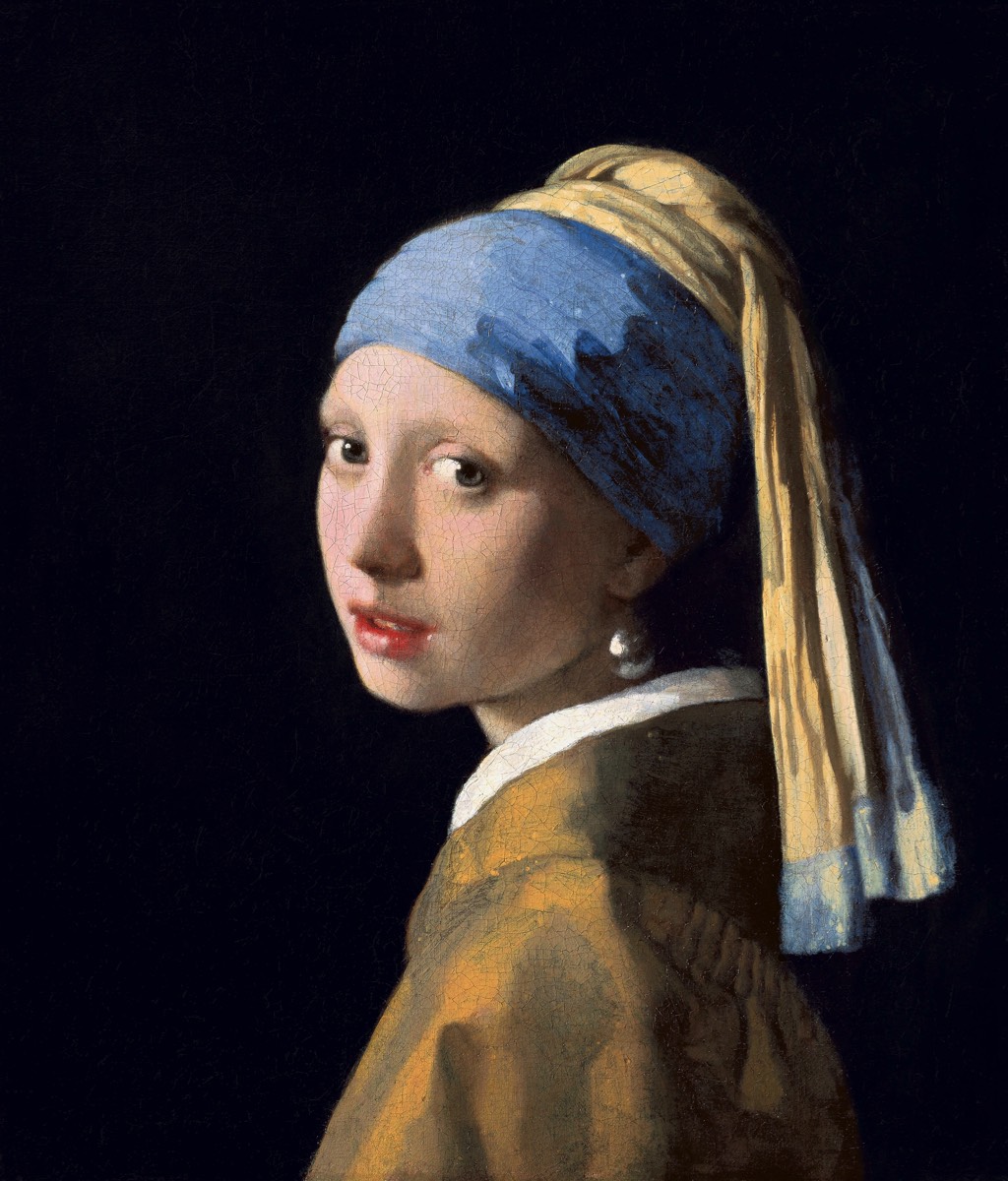
Girl with a Pearl Earring
c. 1665–1667
Oil on canvas, 46.5 x 40 cm. (18 1/4 x 15 1/4 in.)
Mauritshuis, The Hague
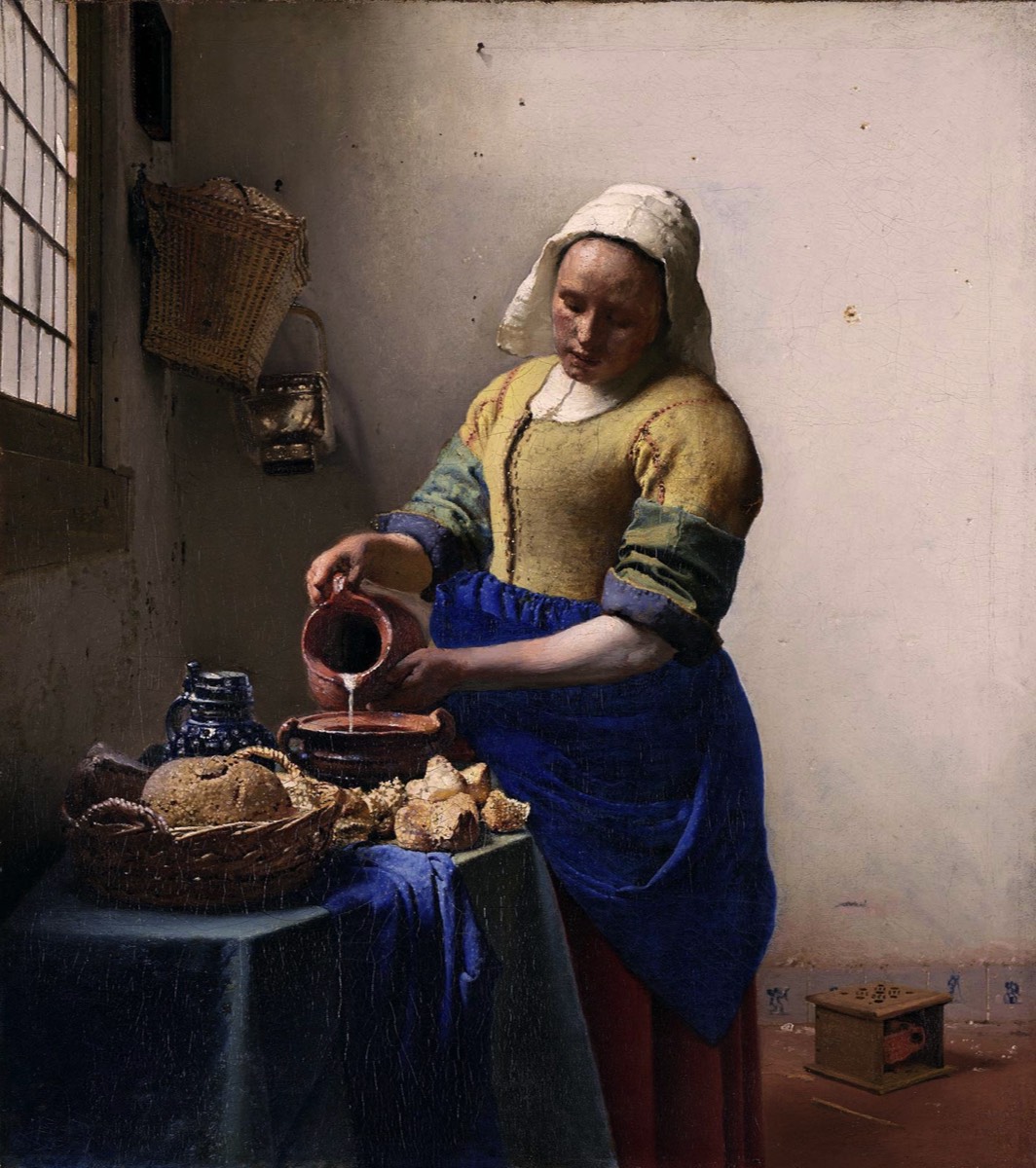
The Milkmaid
c. 1657–1661
Oil on canvas, 17 7/8 x 16 1/8 in. (45.5 x 41 cm.)
The Rijksmuseum, Amsterdam
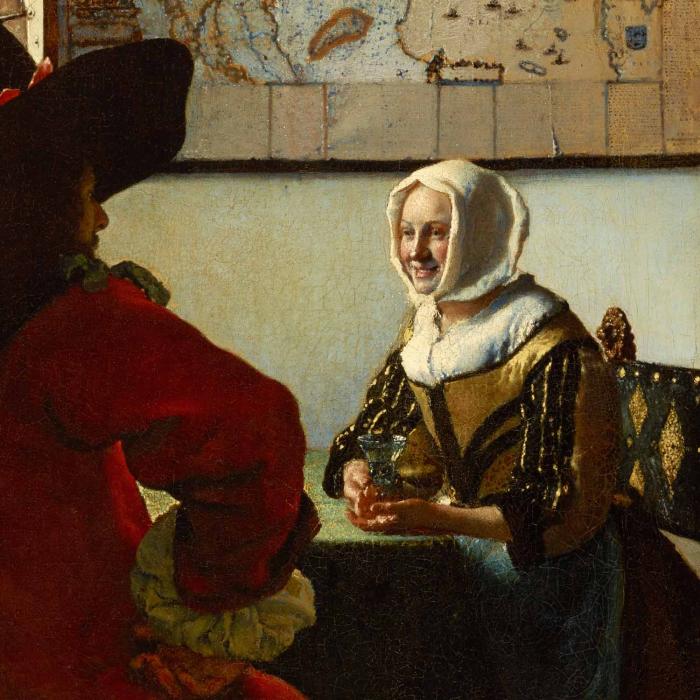
Officer and Laughing Girl
c. 1655–1660
Oil on canvas, 50.5 x 46 cm. (19 7/8 x 18 1/8 in.)
Frick Collection, New York




